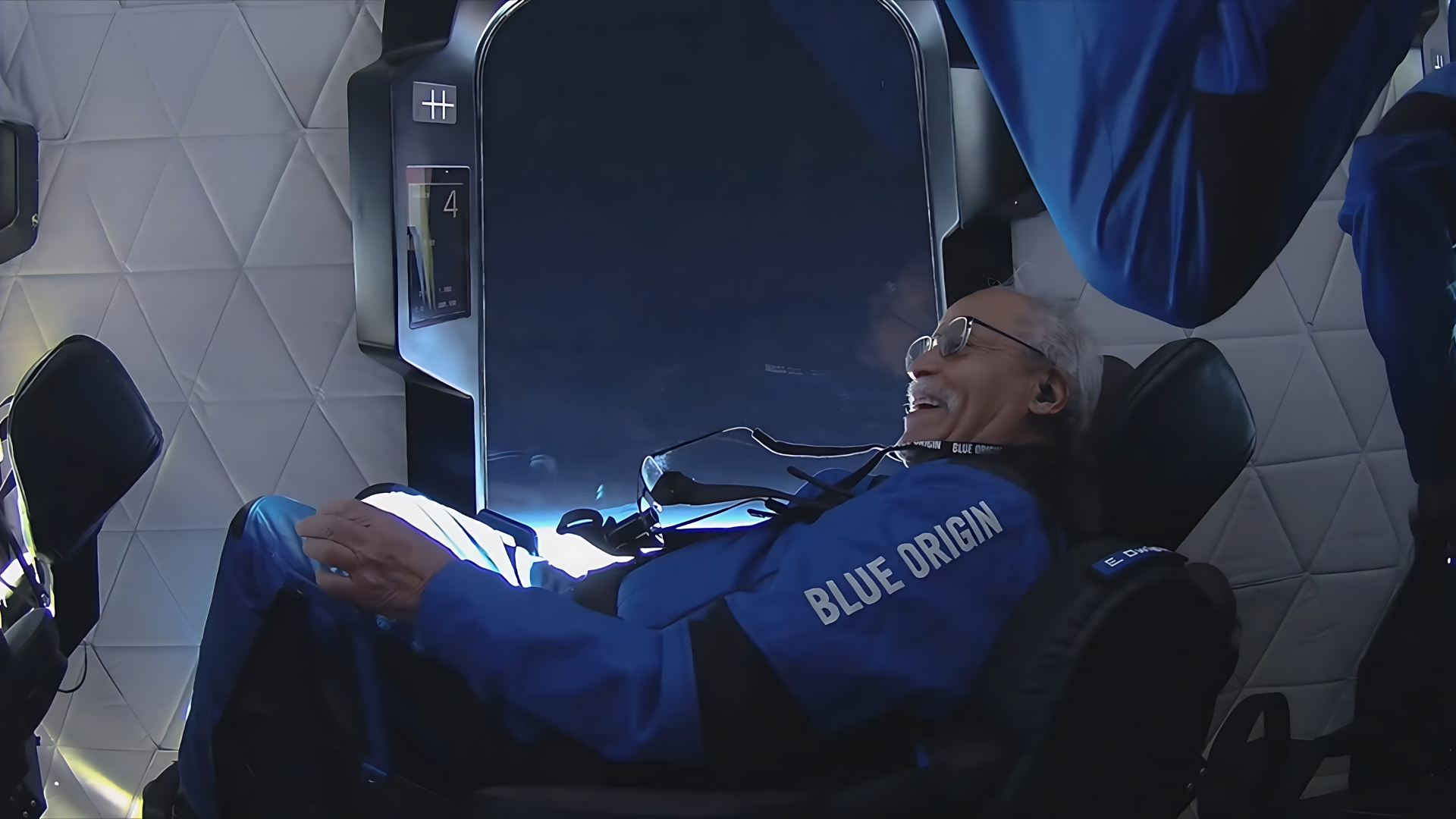In a remarkable achievement that bridges a legacy of perseverance and the modern era of space tourism, Ed Dwight, at 90 years old, has become the oldest person to reach space. This milestone was achieved aboard Blue Origin’s NS-25 mission, which launched from West Texas at 10:37 am on a Sunday. Dwight’s journey, which began over six decades ago, has finally culminated in a historic flight that not only shatters records but also inspires future generations.
The Beginning of a Dream
Ed Dwight’s journey to space began in 1961 when he was selected by President John F. Kennedy as the first Black astronaut candidate. Dwight, an Air Force pilot at the time, was sent for astronaut training at the Aerospace Research Pilot School. Despite his qualifications and the initial support, Dwight was not selected for NASA’s Astronaut Corps in 1963, a class that included notable astronauts such as Buzz Aldrin and Michael Collins. This exclusion marked a significant moment in Dwight’s life, but it did not deter his passion for aviation and space.
A Multifaceted Career
After retiring from the Air Force in 1966, Dwight’s career took several turns. He ventured into entrepreneurship and later transitioned into the arts, earning a master’s degree in sculpture in the late 1970s. Dwight dedicated his artistic career to honoring Black history, creating over 130 public works across the United States and Canada. His sculptures, many of which have flown into space, serve as enduring tributes to the contributions and struggles of African Americans.
The Historic Flight
Dwight’s space flight was part of Blue Origin’s NS-25 mission, where he was accompanied by five other passengers. This flight was particularly significant for Blue Origin as it marked the company’s first crewed mission in nearly two years, following a 2022 accident that temporarily grounded their operations. The NS-25 mission surpassed the Karman Line at 62 miles above Earth, providing a few minutes of weightlessness for its passengers during the approximately 10-minute journey.
As the spacecraft began taxiing for takeoff, Dwight and his fellow passengers experienced the exhilarating moments leading up to their ascent into space. Upon touchdown, a visibly elated Dwight emerged from the capsule, expressing his newfound appreciation for the experience. “I thought I really didn’t need this in my life but now I need this in my life. I am ecstatic … It was a life-changing experience. Everybody needs to do this,” he proclaimed.
Impact and Legacy
Dwight’s seat on the Blue Origin flight was sponsored by Space for Humanity, a nonprofit organization dedicated to democratizing access to space. His achievement not only sets a new record for the oldest person in space, surpassing William Shatner’s 2021 record, but also highlights the growing accessibility of space travel. The participation of civilians in space missions, driven by companies like Blue Origin, Virgin Galactic, and SpaceX, is making the final frontier more reachable than ever before.
The significance of Dwight’s journey extends beyond his personal achievement. It underscores the importance of representation and perseverance in the face of adversity. Although he was not selected for NASA’s astronaut corps in the 1960s, Dwight’s continued pursuit of his passions and contributions to society have left an indelible mark. His sculptures and public works continue to inspire and educate, while his space flight serves as a powerful symbol of what can be achieved through determination and resilience.
Ed Dwight’s journey from being the first Black astronaut candidate to becoming the oldest person in space is a testament to his enduring spirit and the evolving nature of space exploration. His flight with Blue Origin’s NS-25 mission not only marks a personal triumph but also represents a broader milestone in the commercialization of space. As regulatory bodies investigate the lapse that allowed the standby passenger to board, IndiGo is taking steps to enhance its operational protocols, ensuring such errors are avoided in the future. This episode serves as a reminder of the complexities involved in managing airline operations and the continuous need for vigilance and improvement in passenger handling procedures.















